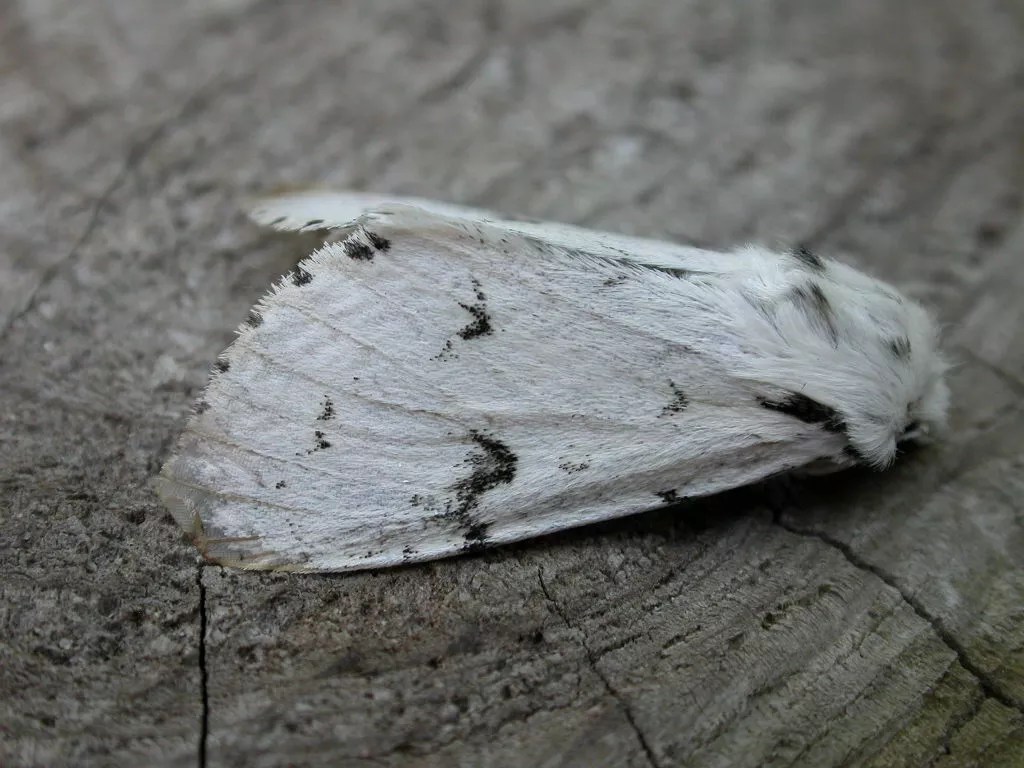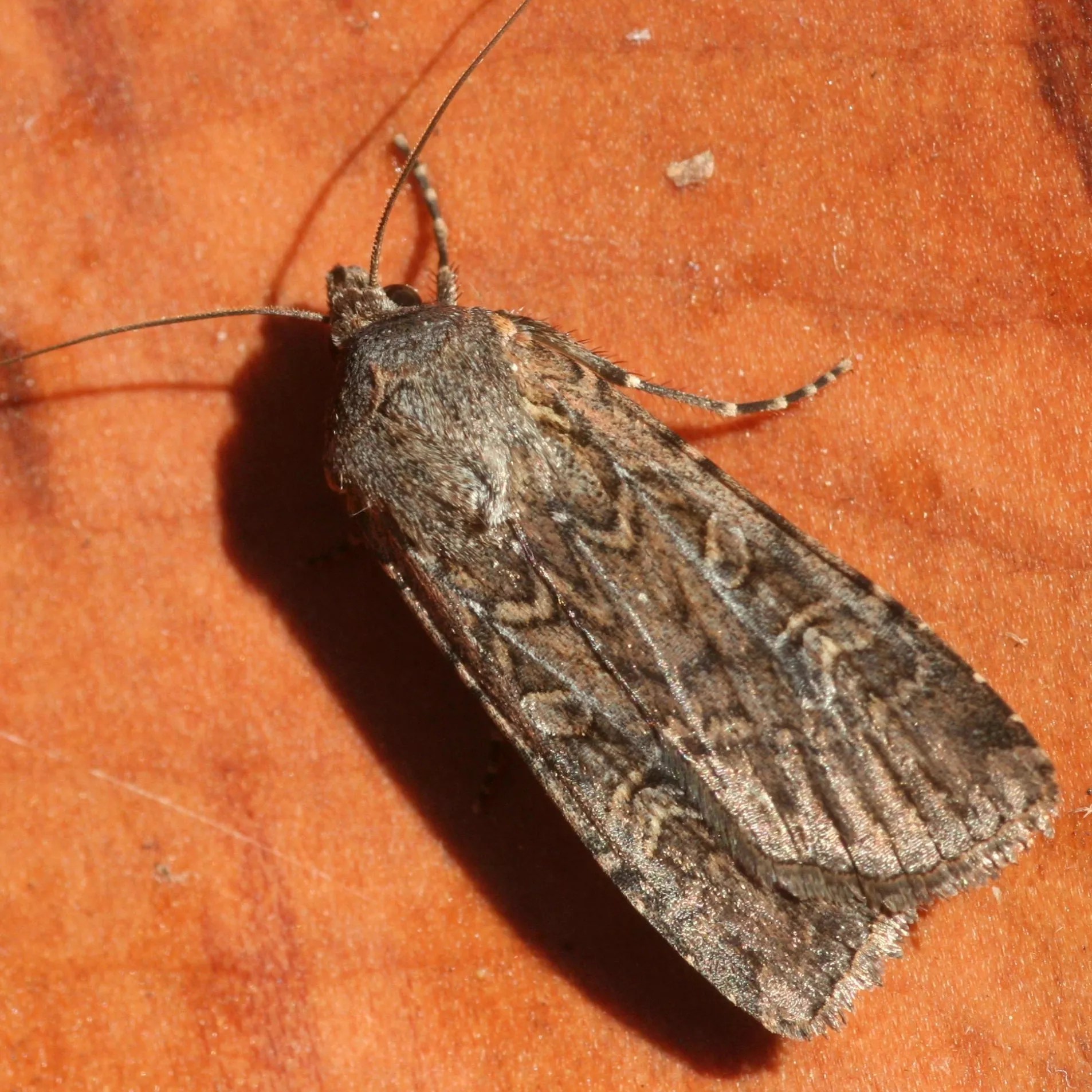
By Donald Hobern from Canberra, Australia – Acronicta leporina, CC BY 2.0, Link

Audio By Carbonatix
Each year, miller moths descend upon Denver as the creatures make their way from their birthplace in the plains to the mountains, where they live among the wildflowers.
Though miller moths haven’t arrived in droves yet this year, they’re still on their way, according to Shiran Hershcovich, a senior lepidopterist – AKA butterfly expert – at the Butterfly Pavilion in Westminster.
And Coloradans should be grateful, not horrified, at the moths’ arrival, Hershcovich adds, as they play an important role as pollinators.
“A moth-y year tends to have the connotation of, ‘Oh no, too many moths!'” she says. “But it’s a great thing. It means we’re going to have a lot of resources for all of our pollinators. It means we’re going to see a lot of butterflies in our backyard. It means that the migratory birds that visit our states are going to be healthy, as well, and that we’re going to have a thriving food web ecosystem that year.”
This year, make your gift count –
Invest in local news that matters.
Our work is funded by readers like you who make voluntary gifts because they value our work and want to see it continue. Make a contribution today to help us reach our $50,000 goal!
Miller moths, technically called the army cutworm moth, may be annoying if they make their way into your home, but they are harmless to people and pets. Usually, the moths come to Denver in the late spring and stay for about a month, so even though they’re late to the game in 2025, there is still plenty of time for the moths to arrive, according to Herschcovich.
“When the temperatures start warming up and the days start getting longer, those are some of the cues they’re going to need to emerge,” she says. “They’re going to essentially be following blooms all along their migratory routes. …They’re going to follow those flowers as they start blooming, from the plains all the way to the mountains.”
Timing differs annually depending on climate conditions, like temperature, humidity and moisture.
“They’re going to quickly respond to dry years versus wet years,” Hershcovich says. “Last year, for example, being a pretty dry year was not a great year for butterflies or moths.”
Colorado experienced great snowpack levels in the north and extremely low levels in the south in 2025, according to NOAA data, while much of the state is experiencing drought, according to the U.S. Drought Monitor.
So, how does that affect when and how many miller moths will show up this year?
“These are the kinds of questions that make me want to have a crystal ball, because they’re so hard to answer,” Hershcovich says. “It really sheds a light on how understudied these animals are. We see hundreds and thousands of miller moths in our backyards every year, and we know next to nothing about them.”
Hershcovich says information about invertebrates is low in general, as resources to study them haven’t always existed. Last year, the Butterfly Pavilion partnered with the Bureau of Land Management to launch one of Colorado’s largest pollinator surveys in history to understand how to support the invertebrates here, including miller moths.
Remaining dedicated to invertebrate research could help the Butterfly Pavilion answer more questions about miller moths and better predict their patterns. For now, here’s what we do know.
Miller Moth Field Guide
Miller moths stand out because of their propensity to end up in human houses. They’re easy to identify by their “classic miller moth-y shape” Hershcovich says. Miller moths are comletely harmless. CSU
“We’re generally going to be able to tell them apart from many other butterflies by the way they hold their wings together, almost like a triangle or a tent,” she describes. “They’re also going to have an ashy gray coloration to their wings.”
Miller moths’ tiny scales rub off as they move, a major distinction of the species, which led to its street name as people found the scales resembled flour dust stuck to the clothing of those who milled flour.
Butterflies and moths are very closely related, with the main difference being butterflies have evolved day-flying traits while moths have evolved to be nocturnal. In Colorado, there are four to five moth species for every species of butterfly, according to Hershcovich.
“Moths are often the underappreciated and underrepresented, under-loved cousin of the butterfly,” the scientist says. “We are lucky here in Colorado to be part of their migratory route and be a home for miller moths. Miller moths, in turn, feed many other animals that we love to see around us, like birds and bears.”
Still, Hershcovich knows how the active presence of miller moths can stress people out, so she has some moth survival guide tips to share:
The most important thing people can do for both themselves and the moths is turn off their lights.
“Moths have, through millions of years, evolved such an incredible system of navigation that is truly impressive for an insect, and we have rendered those millions of years of evolution almost useless by turning on our lights,” Hershcovich says. “They’re used to navigating using celestial objects above them as a guide.”
Moths are basically the astrology girls of the natural world, finding their way by being guided by stars. They’re attracted to human-made lights, because they assume they are stars telling moths where to go.
Hershcovich says sealing windows, closing doors and making sure screens on windows or doors are in good repair can also help keep moths outside where they belong.
If a moth does end up inside, they can be caught in your hands or in a cup and placed back outside. Hershcovich urges people to approach moths with compassion as they’re not trying to be in our way. In fact, our big city with tons of confusing lights is what’s obstructing their historic migration path.
“When we think of pollution, we often think of chemicals in a river, but light pollution is also a very real effect,” Hershcovich says. “It’s pretty cool that [moths] have been able to migrate along the same path for thousands of years using the stars. …By turning off our lights, we’re able to continue fostering that migration.”
If you want to help moths and other invertebrate pollinators keep up their good work, the Butterfly Pavilion has established the Colorado Butterfly Monitoring Network, so anyone in the state can help observe and document invertebrates in their area.
There is still a lot to learn about miller moths, but one thing is certain: they are coming – and soon.